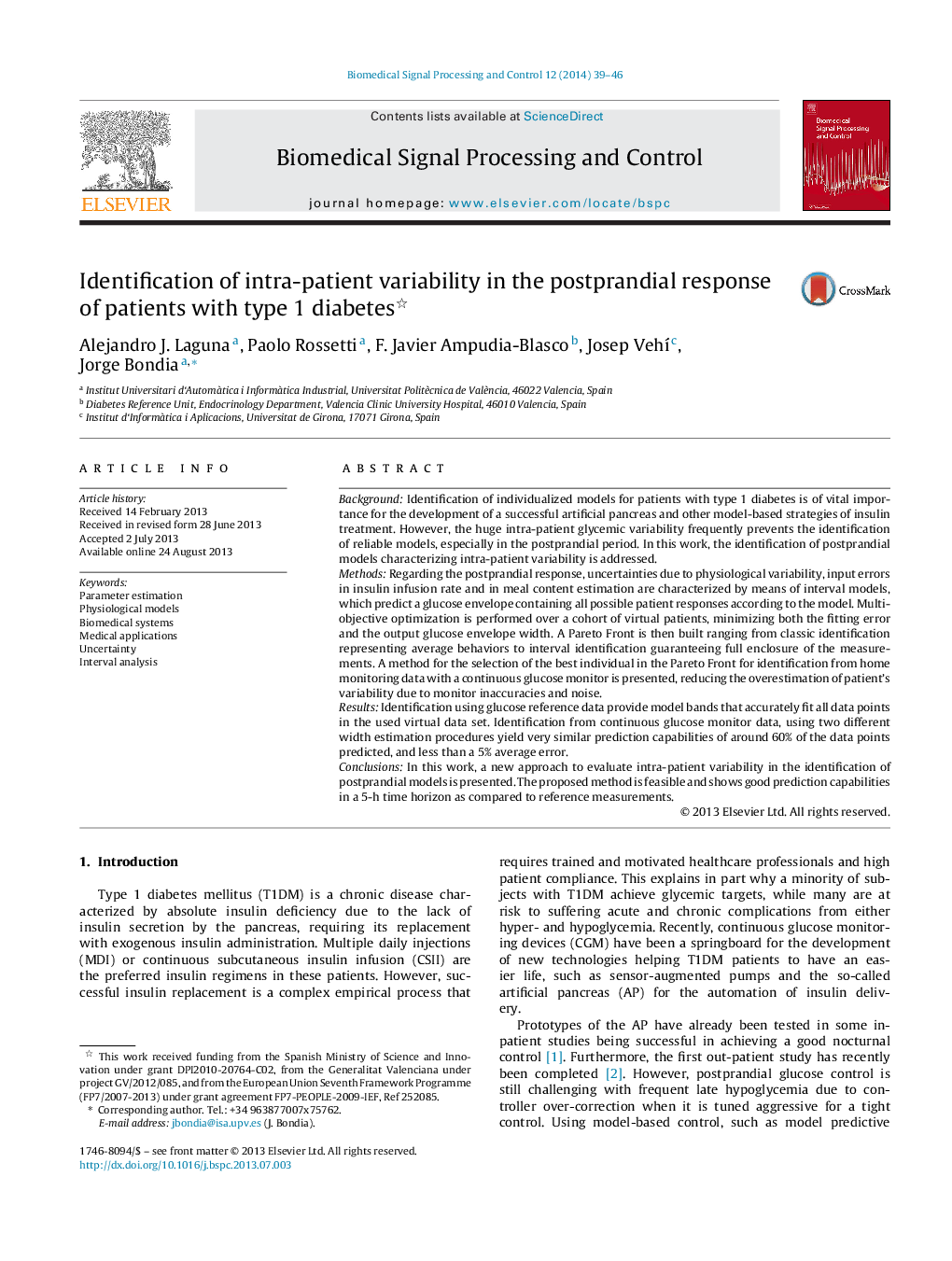| Article ID | Journal | Published Year | Pages | File Type |
|---|---|---|---|---|
| 558764 | Biomedical Signal Processing and Control | 2014 | 8 Pages |
•14 virtual patients were created simulating intra-patient variability.•Blood glucose (BG) and continuous monitor (CGM) data were simulated.•Identification using interval models for consideration of uncertainty was performed.•Linear regressions between CGM and BG widths were calculated for width estimation.•Prediction capabilities of the models with the estimated widths were evaluated.
BackgroundIdentification of individualized models for patients with type 1 diabetes is of vital importance for the development of a successful artificial pancreas and other model-based strategies of insulin treatment. However, the huge intra-patient glycemic variability frequently prevents the identification of reliable models, especially in the postprandial period. In this work, the identification of postprandial models characterizing intra-patient variability is addressed.MethodsRegarding the postprandial response, uncertainties due to physiological variability, input errors in insulin infusion rate and in meal content estimation are characterized by means of interval models, which predict a glucose envelope containing all possible patient responses according to the model. Multi-objective optimization is performed over a cohort of virtual patients, minimizing both the fitting error and the output glucose envelope width. A Pareto Front is then built ranging from classic identification representing average behaviors to interval identification guaranteeing full enclosure of the measurements. A method for the selection of the best individual in the Pareto Front for identification from home monitoring data with a continuous glucose monitor is presented, reducing the overestimation of patient's variability due to monitor inaccuracies and noise.ResultsIdentification using glucose reference data provide model bands that accurately fit all data points in the used virtual data set. Identification from continuous glucose monitor data, using two different width estimation procedures yield very similar prediction capabilities of around 60% of the data points predicted, and less than a 5% average error.ConclusionsIn this work, a new approach to evaluate intra-patient variability in the identification of postprandial models is presented. The proposed method is feasible and shows good prediction capabilities in a 5-h time horizon as compared to reference measurements.
